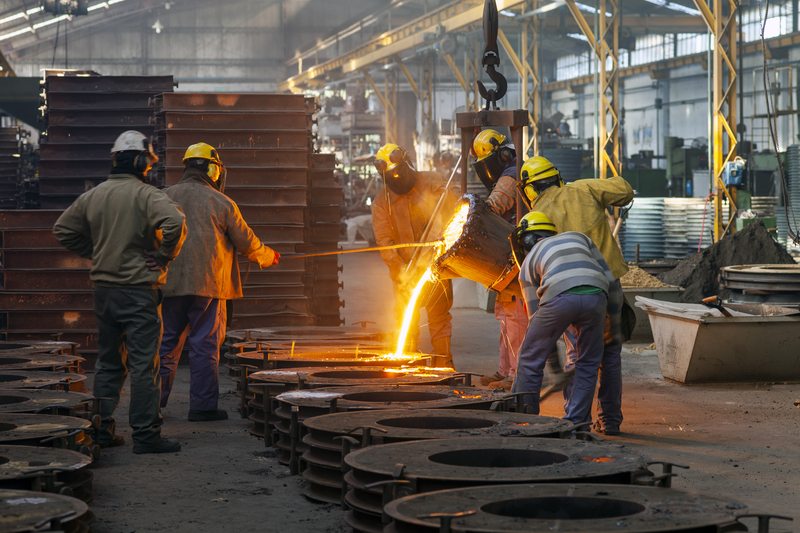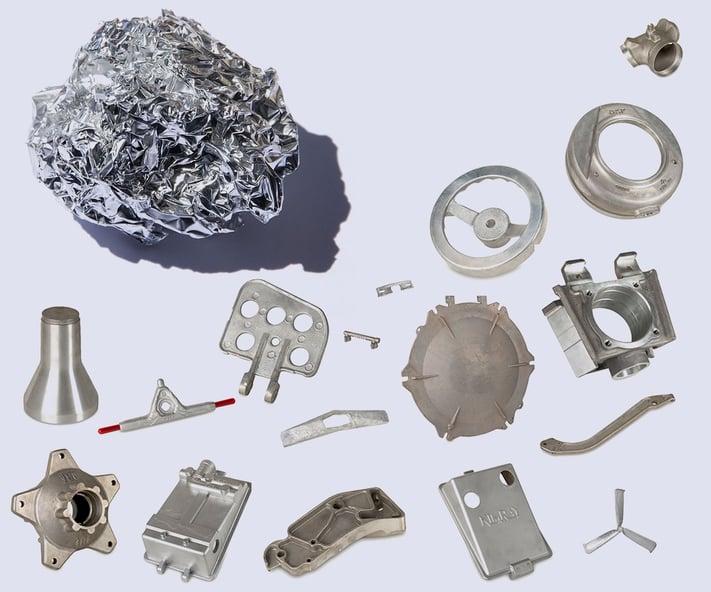Some Known Incorrect Statements About Aluminum Castings Company
Table of ContentsAluminum Castings Company Can Be Fun For EveryoneAll About Aluminum Castings CompanyWhat Does Aluminum Castings Company Do?The smart Trick of Aluminum Castings Company That Nobody is DiscussingAll About Aluminum Castings Company9 Easy Facts About Aluminum Castings Company ShownGetting My Aluminum Castings Company To Work9 Simple Techniques For Aluminum Castings Company
There are two key kinds of die casting made use of in the light weight aluminum spreading market: warm chamber die spreading and cold chamber pass away casting. The primary distinction in between these approaches is how the molten metal is provided to the mold. In hot chamber pass away casting, frequently utilized for lower melting point steels, the fusion is straight connected to the device, and a bettor compels the material through a gooseneck right into the die tooth cavity.
Unknown Facts About Aluminum Castings Company
In these techniques, the mold and mildew is intentionally destroyed or escaped in order to draw out the completed aluminum spreading. Typical processes under the classification of expendable mold and mildew casting include (financial investment spreading),,, and investment casting. When making customized aluminum parts utilizing expendable molds, manufacturers put molten light weight aluminum or light weight aluminum alloys right into the mold, which is after that broken apart to launch the strengthened metal component.
The is just one of the oldest and most favored kinds of aluminum casting. It involves condensing specialty factory sand, frequently reinforced with clay or material, around an exactly crafted reusable pattern that identifies the form and inner information of the ended up aluminum item. The pattern system includes risers and vents to manage the flow of liquified steel and to stop casting problems such as shrinkage porosity.
The Basic Principles Of Aluminum Castings Company

This mold and mildew is after that preheated prior to the pouring of liquified aluminum or light weight aluminum alloy. As the metal fills the shell, it captures the intricate details and great surface finish of the mold. When cooled down, the ceramic is mechanically or chemically damaged away, enabling the elimination and splitting up of private cast parts.
Aluminum Castings Company - Questions
Irreversible mold and mildew spreading makes use of reusable metal mold and mildews and is ideal for automation with consistent quality and less waste. Expendable mold and mildew casting uses single-use mold and mildews, like sand or foam, providing design adaptability and reduced tooling costs for prototypes or short runs. Pass away casting is best for generating high volumes of aluminum components that need tight tolerances, fine information, and smooth surface areas.
The Toshiba Device DC-J Series includes die casting makers ideal for aluminum. Understood for their durable construction and high shot efficiency, these devices make sure reliable and precise casting (Sand Foundry).

While aluminum can be utilized in its pure type, it is often alloyed with other metals to enhance its homes or visit site the buildings of the various other metals. These alloys provide improved efficiency for different applications. Aluminum alloys are categorized right into 8 series, numbered from one to 8. The first figure(s) of the number show the key alloying component integrated with aluminum.
Aluminum Castings Company Fundamentals Explained
This alloying improves the stamina and hardness of aluminum yet lowers its ductility and corrosion resistance. The 2000 series alloys are challenging to weld but can be warm dealt with to enhance their homes. The 3000 series alloys are mainly alloyed with manganese. This combination improves rust resistance while supplying moderate strength.
Furthermore, it features high ductility and an extremely smooth ended up surface. The 4000 collection alloys are alloyed with silicon, which decreases the melting factor and enhances fluidity. This makes it a popular option for casting, as it is very easy to create in its liquified state. The 4000 series is also frequently made use of as a filler for welding and brazing applications.
Aluminum Castings Company - The Facts
This series is classified as a high-strength alloy, specifically fit for sheet and plate applications due to its superb weldability. Its resistance to corrosion from acids and alkalis makes it excellent for use in severe and aggressive environments (Aluminum Melting and Casting). The 6000 collection alloys are alloyed with both magnesium and silicon, providing a balance of stamina, mechanical residential properties, and rust resistance
Processing the 6000 series needs specialized and advanced devices, which can be complicated and costly. This collection is known for its excellent deterioration and oxidation resistance, as well as its ease of covering, treatment, and workability. The 7000 series aluminum alloys are the greatest and most resilient amongst light weight aluminum kinds, with strength similar to about two-thirds of industrial-grade A3 steel.
About Aluminum Castings Company
Zinc is the primary alloying component in the 7000 series, boosting the solidity of the light weight aluminum, also though zinc's hardness resembles that of aluminum on the Mohs scale. The 8000 series aluminum alloys are primarily alloyed with tin, in addition to little quantities of copper and nickel (Aluminum Castings Company). While these alloys provide lower strength contrasted to various other series, they master machinability and use resistance
Light weight aluminum cast heatsinks are electrically conductive, permitting them to be based properly. They are frequently cast with integrated functions that reduce the demand for second operations, such as additional machining or setting up, causing additional price savings. Aluminum spreading is often made use of to produce braces for both sturdy commercial equipment and home appliances.
Aluminum Castings Company Fundamentals Explained
The single-piece building and construction of light weight aluminum braces enhances their stamina and longevity, lowering the chance of failure. If holes are called for, they can be included straight in the spreading mold and mildew, minimizing the requirement for post-production completing (https://trello.com/c/6pYqyDhw). Manufacturers have actually increasingly adopted aluminum spreading for golf equipment as a result of its toughness, security, and adaptability in shaping